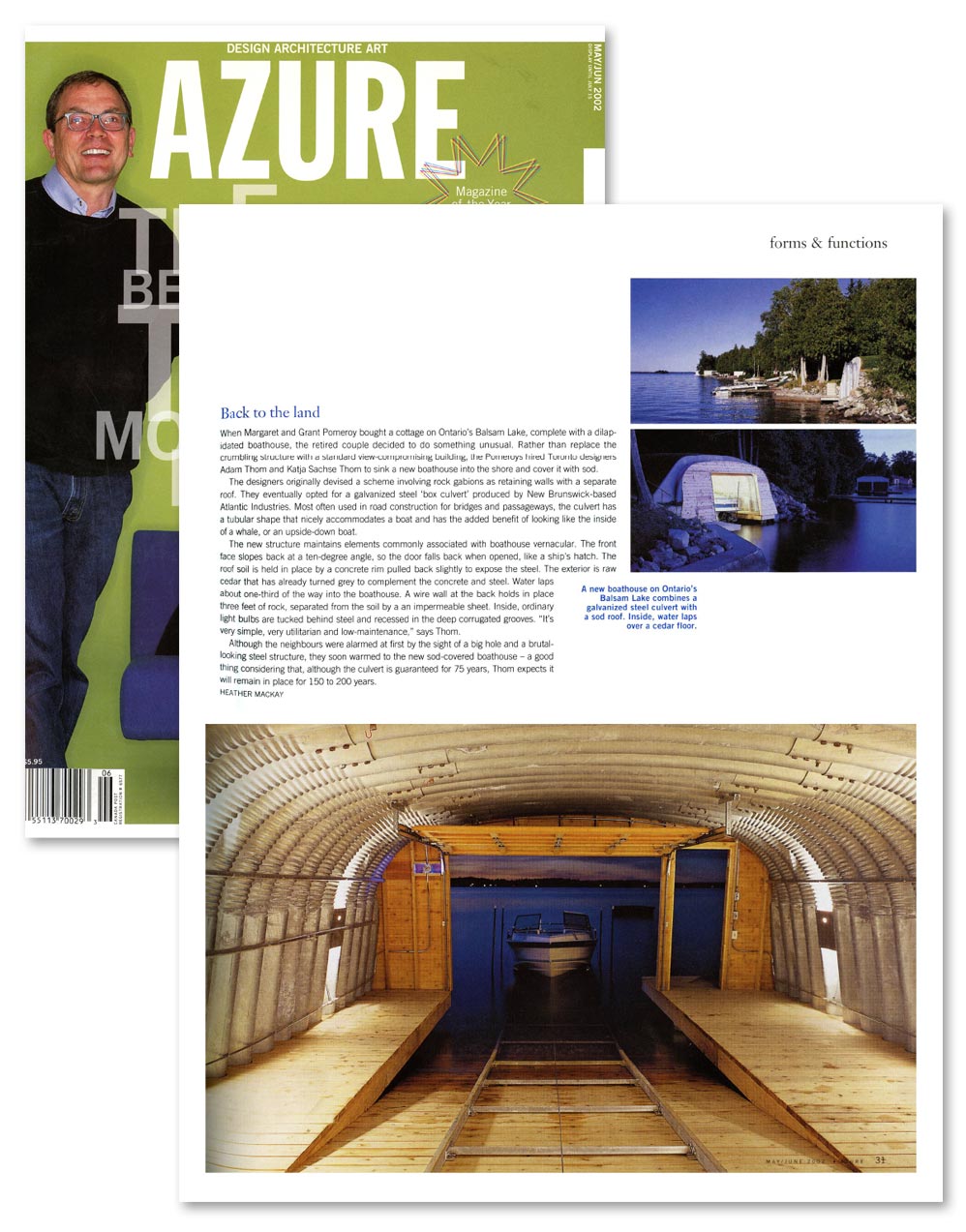Balsam Lake Boathouse in Azure

Balsam Lake Boathouse in Azure
Heather MacKay—When Margaret and Grant Pomeroy bought a cottage on Ontario’s Balsam Lake, complete with a dilapidated boathouse, the retired couple decided to do something unusual. Rather than replace the crumbling structure with a standard view-compromising building, the Pomeroys hired Toronto designers Adam Thom and Katja Sachse Thom to sink a new boathouse into the shore and cover it with sod.
The designers originally devised a scheme involving rock gabions as retaining walls with a separate roof. They eventually opted for a galvanized steel ‘box culvert’ produced by New Brunswick-based Atlantic Industries. Most often used in road construction for bridges and passageways, the culvert has a tubular shape that nicely accommodates a boat and has the added benefit of looking like the inside of a whale, or an upside-down boat.
The new structure maintains elements commonly associated with boathouse vernacular. The front face slopes back at a ten-degree angle, so the door falls back when opened, like a ship’s hatch. The roof soil is held in place by a concrete rim pulled back slightly to expose the steel. The exterior is raw cedar that has already turned grey to complement the concrete and steel. Water laps about one-third of the way into the boathouse. A wire wall at the back holds in place three feet of rock, separated from the soil by an impermeable sheet. Inside, ordinary light bulbs are tucked behind steel and recessed in the deep corrugated grooves. “It’s very simple, very utilitarian and low-maintenance,” says Thom.
Although the neighbours were alarmed at first by the sight of a big hole and a brutal-looking steel structure, they soon warmed to the new sod-covered boathouse—a good thing considering that, although the culvert is guaranteed for 75 years, Thom expects it will remain in place for 150 to 200 years.